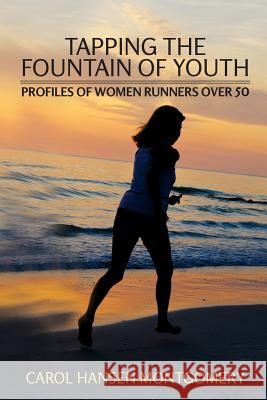Tapping the Fountain of Youth: Profiles of Women Runners Over 50 » książka
Tapping the Fountain of Youth: Profiles of Women Runners Over 50
ISBN-13: 9781475231007 / Angielski / Miękka / 2012 / 196 str.
Foreword by Kathrine Switzer. This book consists of transcripts of interviews with 28 women ages 50 to 83 who run and compete in road races. These women range from international class competitive runners to recreational athletes. While each has a unique, inspiring story to tell, they are also, collectively, in a sense, "everywoman." They are single, married, working, retired-from different races and ethnicities. Some have children, grandchildren, or even great-grandchildren. They are survivors, who have experienced loss, illness, or personal crises-yet find in their running a new strength to cope with these losses. What have these women found as runners that brings them back every year? What can readers learn from their longevity in competition? Perhaps the key lesson is that many of the limits people set are artificial and that with proper self-care, we not only can extend our lives but enhance our physical, mental and emotional vitality. To quote Betty Lundquist "When I started running, my son-in-law said to me: Mom, I can't promise that running will extend your life, but I promise running will extend your active life. That is so true." While competitive success-and the pride that comes with it-is a motivating theme in all lives of the women we profile, it's only one reason to run. Dori Iten perhaps put it best: "The self-confidence carries over to other areas of my life." Several women used running to stop smoking. "Not wanting to gain weight" was mentioned almost universally. With obesity on the rise, it is more important than ever to counter that trend with stories of people who successfully live healthy, active lives-and who, as a result, don't need expensive cosmetic surgery to look younger; instead, they have found a more natural "fountain of youth." Staying slender led to good health and an appearance, many would claim, 10 years younger than their sedentary friends. Abby Raven says, "A nice unexpected benefit of running is that I look younger than most women my age. My husband tells me that I don't look so good by accident. He knows how hard I work at it." Abby adds, "It's more than vanity. I'm looking for balance. I view exercise as part of a healthy life. Without it, there's something missing." That feeling of "something missing" or "a void" is what all these women feel when they can't exercise. Carol Lelli puts it this way: "I'm addicted to exercise and that is a good thing." What happens when these women are injured and can't run? They bike, swim, and go to the gym to use the elliptical trainer or stair-master or stationary bike. One ran in deep water without a flotation device for 10 minutes; another, in a cast that made her leg immobile, used a hula hoop. Running can be seductive. Walk into any running store, and you'll find race entry forms and running-club announcements. Buy a pair of shoes, and you've bought into a culture. Enter one race, and you'll want to enter more. A new world opens up, one that someone past 50 with children in high school or college-or on her own-has more time to enjoy. Surprisingly to most women interviewed, new friendships form based on running. Some have even found husbands and life partners in the running community. And it is truly never too late to start. One of the most accomplished athletes, now in her 80s, began running at 59 while recovering from breast cancer. For the millions of women who have already adopted the running life style, the profiles will to be more than motivating. They provide new training ideas, new goals, ideas for good nutrition and strategies for dealing with injuries.
Zawartość książki może nie spełniać oczekiwań – reklamacje nie obejmują treści, która mogła nie być redakcyjnie ani merytorycznie opracowana.











